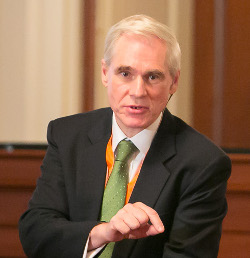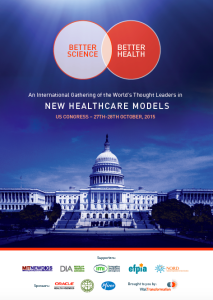Better Science, Better Health: New Healthcare Models
Event Report
We are riding a wave of unprecedented medical innovation, but currently living with regulatory, reimbursement and healthcare systems that are failing to deliver the benefits to patients.
The will is there, in the shape of a number of research projects, pilots and other initiatives investigating how to improve translation from bench to bedside. It is necessary to find ways of collaborating internationally to ensure the outputs of this research are applied to reduce the cost and timelines in drug development and make precision medicine a reality, leading to better outcomes – so that Better Science does indeed result in Better Health.
Following two days of high-level discussion and debate by experts across the healthcare value chain and from both sides of the Atlantic, a list of action points that must be addressed to drive new healthcare models forward crystallized.
These action points represent the themes that speakers and delegates highlighted and came back to repeatedly – from their many different perspectives – as being the areas that should be prioritized to advance the implementation of precision medicine and patient-centered healthcare models.
1. ICT Infrastructure
The frameworks around which new healthcare models and precision medicine will be built lie not in hospitals or healthcare facilities, but in ICT (information and communications technology) infrastructure that enables open, transparent and comprehensive information capture and exchange. New methods are needed for curating and analyzing huge volumes of observational data, to extract the true value in terms of designing clinical trials, introducing new interventions, and making healthcare patient-centered.
2. Anonymizing data, allowing secondary use
Ensuring the privacy and security of information in electronic health records (EHR) and health databases is paramount. Given this, devising ways to ensure anonymity of data and allowing for secondary use, are critical. However, it should also be recognized that patients want their data to be used. Patient power and self-interest will be a motive force in promoting re-use of information.
3. Unique patient identifiers
Exemplars such as Estonia demonstrate the value of having some form of unique patient number through which to link records. This small item of information can open the window from one data silo to another.
4. Removing the boundaries between research and clinical practice
Precision medicine and randomized control trials (RCT) are contradictions in terms. If personalized medicine is to flourish, trials must be re-designed to allow iterative research, where results can be fed back to inform ongoing studies.
5. New models must be patient-centered
As experience in rare diseases amply illustrates, a patient-centered approach informs and accelerates development, and provides a lever to speed up access. The experience rare diseases patients group have built up must be read across to the application of personalized medicine in broader indications. Patients must be empowered to participate in regulatory processes, health technology assessments (HTA) and commissioning decisions across the life cycle, from scoping R&D programs to providing feedback on how a drug performs in real life.
6. Collaboration is the key
Whatever new models are adopted, they will not function effectively and achieve the aim of reducing timelines and speeding up access, unless there is collaboration across the life cycle of a drug.
7. Ensure the framework and regulation for in-market studies is in place and enforced
Tools and rules are needed to ensure follow-on studies are completed as requested by regulators. Over time, capabilities in carrying out observational studies will increase, the infrastructure will be better and the track record will improve. Methods for data collection and standards for data use will increase the stature of real world data and make it more useful and more reliable.
8. A new era for regulatory science
The existing tools of regulatory science are not sufficient for the personalized medicine future. New tools are needed, regulatory science needs to be professionalized and enhanced, and embraced as a discipline in its own right. The boundaries must be expanded to take in the social sciences, providing channels for patients to have a full say in what outcomes matter to them.
9. Rare diseases as role models
Rare diseases patients’ groups are lighting the way in terms of putting patient participation at the heart of drug development. The small patient numbers and the severity of disease have forced regulators to rethink trial designs and consider non-clinical endpoints. In the same way as rare diseases are frequently seen as informing research in broader indications, the level of patient engagement and evidence gathering in rare disease can provide a model for personalized medicine.
10. Intellectual property rights in a data sharing world
The need to collaborate and share data with competitors (even if in a pre-competitive setting) is muddying the IP landscape. It is a topic that must be addressed to ensure sustained commercial interest in developing products and getting them to market.
11. Training and education of healthcare professionals
Personalized medicine will require changes in the approach and practice by professionals across the piece, from scientists in discovery labs to regulators and healthcare professionals. In addition, there is a need to develop greater awareness of clinical research across the clinical community, so that doctors encourage patients to take part in research.
12. Development of new economic models
Personalized medicine will require a reshaping of business models. Time lines and costs of clinical development may be cut, but so too will patient numbers; the costs of diagnostic tests will rise; in healthcare systems costs will shift between budget lines.
 In the view of Sheldon Whitehouse, US Senator for Rhode Island, the key to any new healthcare model lies in robust information technology infrastructure. “It’s no good just having a PC on the desk, you need a network to make it valuable, so that you can have full information exchange,” Senator Whitehouse said, opening the keynote session.
In the view of Sheldon Whitehouse, US Senator for Rhode Island, the key to any new healthcare model lies in robust information technology infrastructure. “It’s no good just having a PC on the desk, you need a network to make it valuable, so that you can have full information exchange,” Senator Whitehouse said, opening the keynote session.
Understanding of the importance of the healthcare information and communications technology (ICT) infrastructure has taken root in the US Senate, paving the way for improved data access based on anonymised information.
“If we can solve the problem of truly anonymizing data, you can start grinding through it, we will learn things, test modes of care; it will create a whole new industry,” said Senator Whitehouse.
Robust and flexible ICT is needed to underpin the new model of drug development and regulation, as envisioned by Hans-Georg Eichler, Senior Medical Officer, European Medicines Agency (EMA), who proposed a life span approach to learning and evidence generation, aligned with the introduction on new methodologies, in which the current over-reliance on randomized control trials (RCT) is balanced out and leavened by the use of observational data.
Such a change in approach is intended to address the fact that personalized medicine will slice indications into smaller and smaller subgroups.
One case in point is cystic fibrosis, which until 1989 and the discovery of the CTFR (Cystic Fibrosis Transmembrane Conductance Regulator) gene which drives the pathology, was classified as one single – rare – disease. Following this breakthrough, cystic fibrosis was divided into subgroups defined by different mutations. The same is true of another rare disease, Duchenne Muscular Dystrophy.
It is hard enough delivering statistical proof of efficacy in rare diseases, but the recognition that what manifests as the same pathology is driven by different mutations makes it far more difficult.
Dr Eichler said an even more challenging aspect of personalized medicine arises when there are multiple therapies targeted to hit a single disease pathway in more than one place, as in the case of cancer drugs that target different mutations in the same tumor type.
Selecting three drugs for use in combination therapy from 40 drugs, each targeted at a specific mutation, becomes an impossibility, Dr Eichler noted. “There are almost 10,000 different combinations; it is impractical to test,” he said.
These complexities call for a life span approach to learning and evidence generation. The traditional boundaries between research and clinical practice become blurred, with real world evidence supporting and reinforcing decision-making.
“We need rapid cycle evaluation – to evaluate as we go – this is the only way to manage health innovation,” said Dr Eichler.
To support the transition from total dependence on RCTs to factoring in observational studies, standards must be set to ensure agreement on what is measured and new methodologies are required for analyzing and synthesizing real world data.
From a number of perspectives, the Critical Path Institute’s (C-Path) approach to pre-competitive research, and sharing expertise and tools for evaluating the safety and effectiveness of medicinal products, embodies the changes that are needed to drive the translation of better science to better health for patients with unmet needs.
 Over the past ten years, C-Path has vastly expanded the pre-competitive space, Lynn D. Hudson, the Institute’s Chief Scientific Officer told the meeting. “A decade ago, it was unusual to get pharma together to discuss. It has taken a culture shift to turn competitors to collaborators,” she said.
Over the past ten years, C-Path has vastly expanded the pre-competitive space, Lynn D. Hudson, the Institute’s Chief Scientific Officer told the meeting. “A decade ago, it was unusual to get pharma together to discuss. It has taken a culture shift to turn competitors to collaborators,” she said.
The incentives to do so come from the recognition that no single organization has the resources or expertise to capitalize on the wealth of new biological science.
The requirement for collaboration is writ large in the case of neonates and older children, who, for the most part, are treated with drugs that have not been tested in these populations and mostly are used off-label.
The International Neonatal Consortium and the Pediatric Trial Consortium, both supported by C-Path, aim to address this, Dr Hudson said, noting, “There is a huge challenge in designing trials: we can’t move the needle without a new model for evidence generation.”
Dr Hudson also pointed to collaborative projects in multiple sclerosis, Alzheimer’s disease and polycystic kidney disease, in which data is being pooled for use by numerous researchers, providing the inputs for better trial design and for the development of qualified biomarkers that are accepted by EMA and FDA (the US Food and Drug Administration).
Collaboration is also the leitmotif of the European Union’s (EU) Innovative Medicines Initiative 2 (IMI 2), a €3.3 billion public private partnership involving leading pharma companies, academics and small companies in an ambitious programme of pre-competitive research.
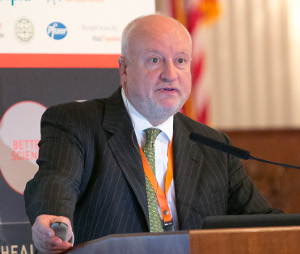 Pierre Meulien, Executive Director of IMI told delegates the goals of the programme are to increase success rates in clinical trials, speed up early drug development, focus on unmet needs, increase the array of actionable biomarkers and develop tools that improve drug development.
Pierre Meulien, Executive Director of IMI told delegates the goals of the programme are to increase success rates in clinical trials, speed up early drug development, focus on unmet needs, increase the array of actionable biomarkers and develop tools that improve drug development.
“The vision for IMI 2 is to go from one size fits all to precision medicine [where you] treat a targeted population and they all respond,” Dr Meulien said.
Of the €3.3 billion, half comes from the EU’s Horizon 2020 research fund, the remainder is in the form of ‘in kind’ contributions from industry. This is significant because, “we get expertise, not cash,” Dr Meulien noted.
IMI 2 is building on the earlier €2 billion IMI 1 programme, which demonstrated success in terms of publication of results in leading science journals, the setting of new standards, use of its research outputs by industry, and influencing regulatory science.
As a public private partnership, IMI is a magnet for collaboration and co-investment, providing a neutral platform around which pharma can work in concert, and an open model of getting other sectors, such as ICT companies to participate. “If IMI did not exist, you would have to create it,” Meulien said.
Watch the full video of this session.
“We are fighting the battle every day. The best knowledge of the burden of disease is with the patients,” said John Wubbe, Secretary General and CEO of EPPOSI (European platform for patients’ organisations, science and Industry), getting to the heart of the case for patient-centered drug development.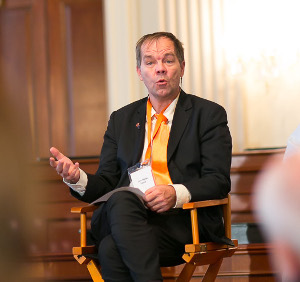
“This is not about lobbying, but taking best practice to the table and making sure there is implementation,” Mr Wubbe told the conference. One aspect requiring particular attention is to harness all the real world data sources that patients are central to generating, from information from mobile fitness and wellness apps to ambient assisted living devices, tissue donated to biobanks and individually-owned electronic health records (EHR).
EPPOSI is supporting moves to bring this wealth of information to bear in new healthcare models through projects including the EU’s Biobanking and Molecular Resources Infrastructure. The overall aim is to promote a multi-stakeholder methodology for investigating products from the patient perspective, using real life observational studies across the life cycle from discovery to access.
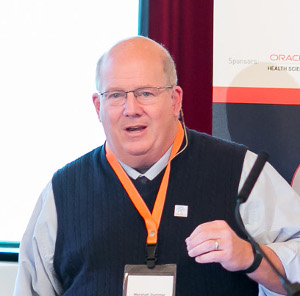 Similarly, Marshall Summar of the National Organization for Rare Diseases (NORD) and chief of genetics and metabolism at Children’s National Medical Center in Washington, D.C., described how NORD is promoting greater patient involvement and access to patient data, as a route to accelerating clinical trials.
Similarly, Marshall Summar of the National Organization for Rare Diseases (NORD) and chief of genetics and metabolism at Children’s National Medical Center in Washington, D.C., described how NORD is promoting greater patient involvement and access to patient data, as a route to accelerating clinical trials.
The NORD patient registry programme, which is backed by FDA and the National Institutes of Health (NIH), collects data on the natural history of diseases for use in refining treatments and testing new ones, with Dr Summar noting that the data is entered primarily by parents and families. NORD is also involved in the drug approval process, with patient participation on FDA panels and patient input into the formulation of acceptable risk models.
Rare diseases are lighting the way in changing regulators’ views of risk benefit, Dr Summar believes. “There is a level of accountability that is missing from other areas – it’s a productive relationship,” he said.
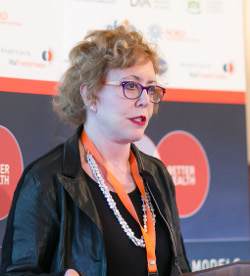 Pat Furlong, Founding President & CEO of Parent Project Muscular Dystrophy endorsed this sentiment. As a result of the efforts of her campaign group, the FDA has for the first time published clinical guidelines for the industry for Duchenne Muscular Dystrophy treatments. These factor in outcomes that would not make the cut as clinical endpoints, but which are important to patients and their carers.
Pat Furlong, Founding President & CEO of Parent Project Muscular Dystrophy endorsed this sentiment. As a result of the efforts of her campaign group, the FDA has for the first time published clinical guidelines for the industry for Duchenne Muscular Dystrophy treatments. These factor in outcomes that would not make the cut as clinical endpoints, but which are important to patients and their carers.
“It has taken 20 years to get to this point, but we are making progress, and this is relevant in other muscle-wasting diseases. The models we create are all widely studied,” Mrs Furlong said, adding, “Patients need and deserve to be at the forefront throughout the development pathway.”
Over the past 12 years the European Patients’ Forum (EPF) has become a strong and influential voice and, said its President Anders Olauson, the Forum is now more important than ever in ensuring a balance between real innovation and equitable access, especially given the way the aftermath of the financial crisis continues to reverberate through Europe’s healthcare systems.
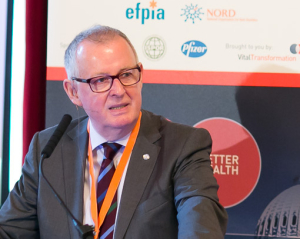 EPF is intimately involved in advancing the patient cause, most recently launching a campaign which is working to embed patient empowerment as a key tenet of drug development. Another important project is the EU-funded EUPATI scheme, through which 100 patient experts have been trained and equipped with the expertise needed to take a full and equal part in the research innovation chain.
EPF is intimately involved in advancing the patient cause, most recently launching a campaign which is working to embed patient empowerment as a key tenet of drug development. Another important project is the EU-funded EUPATI scheme, through which 100 patient experts have been trained and equipped with the expertise needed to take a full and equal part in the research innovation chain.
“We need to have sufficient patient advocates and bring forward the patient experience,” Mr Olauson said. These advocates must be well-versed in the medicine development life cycle and have the confidence to engage as equal partners.
 As the leading global professional society in pharmacoeconomics and outcomes research, with 18,000 individual members, ISPOR is in a position to offer significant inputs in moves to reshape drug development in the interests of the patient and in support of precision medicine, Nancy Berg, CEO and Executive Director told delegates.
As the leading global professional society in pharmacoeconomics and outcomes research, with 18,000 individual members, ISPOR is in a position to offer significant inputs in moves to reshape drug development in the interests of the patient and in support of precision medicine, Nancy Berg, CEO and Executive Director told delegates.
ISPOR’s mission of increasing the efficiency and effectiveness of healthcare to improve health is in line with the objectives of the conference. “We wish to promote health economics and outcomes research excellence to improve decision-making for health globally, Ms Berg said.
The key to getting products through the development loop and to patients sooner lies in harnessing new sources of data – generated beyond the confines of traditional clinical development – to demonstrate safety, efficacy and value.
There are dramatic shifts in this direction in oncology, where the ability to identify disease types with biomarkers is driving a change in how studies are done, noted Sabine Atzor, Director Regulatory Affairs, part time seconded from F.Hoffmann-La Roche to EFPIA.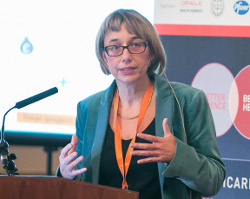
Rather than RCTs, basket trials involving patients with different tumor types but a common mutation, for example BRAF, and umbrella trials, in which a combination of drugs that target different mutations is assessed in a single tumor type, are coming to the fore.
New science and technology is opening up fresh avenues for data generation. On the back of genomics, one notable advance is the ability to pick up tumor DNA in blood samples, avoiding the need for a tissue biopsy.
Similarly, new and more precise imaging technologies and wearable devices and mobile apps are generating wave after wave of data. The MAPPs (Medicines Adaptive Pathways to Patients) project is developing a framework for integrating the data generated by these new tools as part of a life cycle approach to drug development.
The aim is to lay down flexible development and access pathways within the current regulatory framework, balancing early patient access, public health and societal benefits. The intention is that, starting with an early authorization of a product focused on a well-defined and targeted population with a clear safety and efficacy profile, the target population is adjusted as the evidence base expands.
“The change from the current models to MAPPs is in the integration of stakeholders around the table – not just regulators and industry, but also HTA (Health Technology Assessment), patients, payers, Dr Atzor said.
Establishing frameworks and methods for bringing new sources of evidence to bear on drug development is a large enough task in itself, but there is a parallel problem, which is ensuring data is accurate and that it is only used within the confines of allowed use.
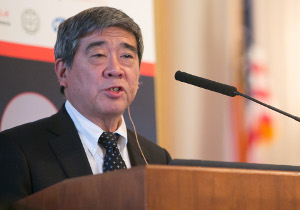 “Records are not always entirely accurate, said Kenneth Oye, Associate Professor of Political Science and Engineering Systems, MIT, detailing a catalogue of errors, from misspelling his name, to incorrect numbers in test results, that he encountered on a recent visit to hospital. “Half the information was correct, but it is awkward when you are talking about using health data. How do you know it’s right?” Dr Oye said.
“Records are not always entirely accurate, said Kenneth Oye, Associate Professor of Political Science and Engineering Systems, MIT, detailing a catalogue of errors, from misspelling his name, to incorrect numbers in test results, that he encountered on a recent visit to hospital. “Half the information was correct, but it is awkward when you are talking about using health data. How do you know it’s right?” Dr Oye said.
Added to the question of data integrity are the fraught issues around consent and the question of whether data can be put to secondary use in research.
While significant effort is going into devising ways of anonymizing data, this can undermine its value. “For example, if you are recruiting to a trial, anonymity is not good,” Dr Oye noted.
After the long years when there was no specific drug treatment for melanoma, a number have recently been approved. In addition to two classes of targeted drugs, in October the FDA and EMA both approved an oncolytic virus treatment, Imlygic.
While these are important advances, none of the new drugs are cures in themselves and with melanoma affecting many young people and causing 23,000 deaths per annum in Europe alone, there are now issues around access, said Bettina Ryll, Founder of the Melanoma Patient Network.
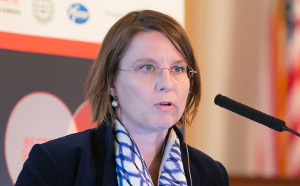 “You need access to survive, one drug is not enough – a single drug is not a cure, you need systematic learning and progress to extend survival,” Dr Ryll said. She is concerned that there will not be a patient-centered approach to managing access and building new care pathways around the new therapies, noting patient input is typically limited to having one patient in the room when decisions are being made. “One person can’t speak for all patients,” said Dr Ryll. Such meeting are never limited to one key opinion leader or a single regulatory expert.
“You need access to survive, one drug is not enough – a single drug is not a cure, you need systematic learning and progress to extend survival,” Dr Ryll said. She is concerned that there will not be a patient-centered approach to managing access and building new care pathways around the new therapies, noting patient input is typically limited to having one patient in the room when decisions are being made. “One person can’t speak for all patients,” said Dr Ryll. Such meeting are never limited to one key opinion leader or a single regulatory expert.
Early access alone will not fix the issue of ensuring optimal use of new melanoma treatments. “You need systematic data gathering. Adaptive licensing is the way to keep learning,” Dr Ryll said, adding, “The unifying theme for me is that real world data is about external validity.”
As experience in establishing public private partnerships and other types of collaborations painfully illustrates, the sharing of data can make for a very complex intellectual property landscape. Whatever the difficulties, the question of how commercial rights fit into new healthcare models must be addressed, said Arti Rai, Elvin R. Latty Professor of Law, Duke Law Center for Innovation Policy.
“It’s a topic that will determine whether a therapy gets to market – so it’s important to talk about it,” Professor Rai said.
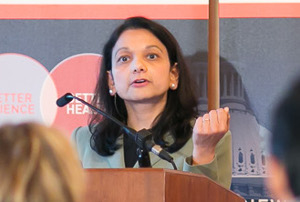 The risk is that without appropriate IP protection there is no commercial incentive. There are approaches to allowing sharing so that greater expertise can be brought to bear, while allowing data owners to benefit, for example a first right of refusal to execute a license.
The risk is that without appropriate IP protection there is no commercial incentive. There are approaches to allowing sharing so that greater expertise can be brought to bear, while allowing data owners to benefit, for example a first right of refusal to execute a license.
While a number of pharma companies, led by GlaxoSmithKline, have established a shared repository for clinical trial data, the use of the data is circumscribed.
The EMA now mandates that clinical study reports are published once a drug is approved. However, noted Professor Rai, the Agency has made an important stipulation in saying that information on new uses of a drug is commercially confidential and will not be published. “If information about new uses is in the public domain, no one can patent it, so EMA is correct to exclude new uses,” she said.
Finding new uses for abandoned compounds is the biggest opportunity arising from data sharing. Rai pointed to the NIH National Center for Advancing Translational Medicine’s approach to supporting academics to find new uses, as an exemplar here. “The NIH has a good model for bringing eyes to bear but ensuring [repurposed] drugs are still patentable,” she said.
Personalized Medicine has come a long way in a relatively short period of time, with 130 or so therapeutics now having an accompanying biomarker or test to make them applicable to a specific patient population.
More is to come, with personalized medicines now accounting for 75 – 80 per cent of current pipelines.
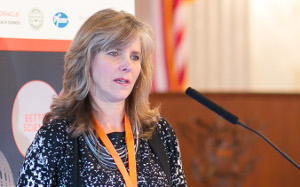 However, there will be challenges in putting these into action, as Laura Esserman, Professor of Surgery and Radiology, Director of the UCSF Carol Franc Buck Breast Care Center told delegates.
However, there will be challenges in putting these into action, as Laura Esserman, Professor of Surgery and Radiology, Director of the UCSF Carol Franc Buck Breast Care Center told delegates.
Professor Esserman is co-principal investigator of the i-SPY 2 breast cancer study that is combining novel trial design and biomarker analysis to create a new model for testing and approving cancer drugs.
The study involves evaluating multiple drugs concurrently in a meta-trial that includes more than 20 cancer centers, within which drugs are tested in small subgroups of patients who are selected using biomarkers to be likely responders.
“We are looking at multiple drugs at the same time, with multiple arms at once – that’s never been done before,” said Professor Esserman.
In the phase II trial, drugs under test are added to the standard of care, with the aim of matching drugs to the cancer subtype where they will have the greatest effect, sparing other patients inappropriate treatment.
Products can then ‘graduate’ to larger phase III trials where they are tested only in patients whose tumors exhibit a precise biomarker signature. The study uses Bayesian statistical techniques to predict from small phase II studies what the likely level of effectiveness will be in phase III.
To date three drugs have graduated with their accompanying biomarkers. “The model definitely works,” Professor Esserman said. “We are a catalyst, an incubator, driving the development of pre-competitive models in which everyone has skin in the game.”
The framework developed for breast cancer has wider relevance and could be extended to other cancer indications, she added.
The rise of personalized medicine has brought the pharma and diagnostics industry into an interdependent relationship – as evidenced by the Personalized Medicine Coalition, a body representing both sectors in promoting the development and adoption of targeted drugs.
One challenge the Coalition is tackling is to ensure that coverage and payment decisions encompass the diagnostic as well as the drug.
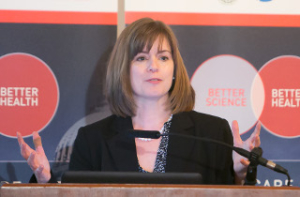 Another is that doctors are kept up to date with developments. “We need a healthcare workforce that is conversant with personalized medicine, doing tests before treatment, explaining to patients they are, or are not, in the subset,” said Amy Miller, Executive VP, Personalized Medicine Coalition.
Another is that doctors are kept up to date with developments. “We need a healthcare workforce that is conversant with personalized medicine, doing tests before treatment, explaining to patients they are, or are not, in the subset,” said Amy Miller, Executive VP, Personalized Medicine Coalition.
There is also an issue around implementation, with healthcare systems needing to reflect the fact that rather than a single care pathway for all patients, personalized medicines are used only for those who will benefit. “Personalized medicines account for 20 per cent of new drugs now – so there need to be fundamental changes sooner or later,” Ms Miller said.
Richard Barker, Founding Director, CASMI (Centre for the Advancement of Sustainable Medical Innovation) illustrated the power of personalized medicine with the case of Cameron Lundfelt, who was just a few months old when he was diagnosed with type I diabetes. Subsequent tests showed this to be a rare form of the disease caused by a mutation of the KCNJ11 gene, in which the pancreas is able to produce insulin, but not to release it.
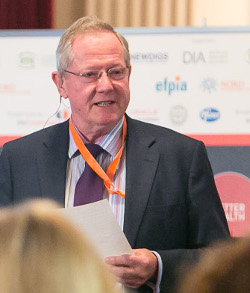 Cameron was receiving conventional treatment with insulin injections but the confirmation he had the rare mutation meant he could be switched to an oral therapy. Rather than six insulin injections per day, his diabetes is managed with three pills.
Cameron was receiving conventional treatment with insulin injections but the confirmation he had the rare mutation meant he could be switched to an oral therapy. Rather than six insulin injections per day, his diabetes is managed with three pills.
“The story reinforces the point that personalized medicine is based on precision analysis. It defines disease molecularly, not by symptoms,” Dr Barker said.
In addition to being central to adaptive pathways, personalized medicine will make it possible to diagnose and intervene sooner. It may even make it possible to anticipate a disease and ensure it does not happen.
“These technologies could simplify and rationalize the provision of care; therefore personalized medicine is crucial to making healthcare sustainable,” said Dr Barker.
The UK’s Precision Medicine Catapult of which Dr Barker is chair, was set up to create the correct environment for commercialization and to grow the sector in the UK. Central to this will be establishing economic models that are in line with the science. “The economic value question is central: the diagnostic lab director doesn’t want to spend more money on tests; you need a person with an overview of care pathways,” Dr Barker said.
At its heart, personalized medicine presents the compelling proposition of a higher response rate. While drugs may cost more, they are used to treat fewer people, there are fewer adverse events and better outcomes.
But, said Mark Trusheim, Executive-in-Residence, MIT, personalized medicine fragments the marketplace. “This raises the question: is there an economic limit? Can we afford personalized medicine?” he said.
In the case of targeted cancer therapies, personalized medicine appears to be setting a course to value destruction. Even with accelerated timelines, it is hard to do better than break even.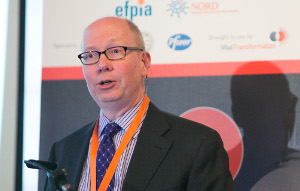
As Mr Trusheim noted, targeted therapies have the potential to expand the label from one indication to several, as is the case with Gleevec. It might also be assumed that higher efficacy would allow a targeted therapy to get a higher market share.
However, most oncology targets are addressed by more than one product in development.
For 35 targets that are the objective of compounds currently in phase III, only 12 have no competition. “So you end up with three drugs going after a 100,000 patient population,” Mr Trusheim said.
On the other hand, there is a huge opportunity going to waste because diagnostics are low cost, low margin products. “There are no incentives to go back and stratify old therapies – it’s impossible to get paid for making legacy treatments precision,” said Mr Trusheim.
This calls for new methods for assessing value, which Mr Trusheim and colleagues are addressing as part of the MIT NEWDIGS (New Drug Development Paradigms) Janus project, which aims to devise a single process for assessing the value for all stakeholders.
The 21st Century Cures Act will put an additional $10 billion over five years into the National Institutes of Health, to fund a targeted program of high risk, high reward research and accelerate the discovery, development and delivery of innovative cures, treatments and preventative measures.
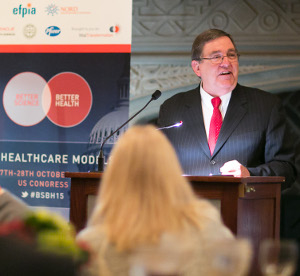 “We want the NIH to go after anything in hand with potential,” said Congressman Michael Burgess MD, a member of the Energy and Commerce Committee, which proposed and formulated 21st Century Cures.
“We want the NIH to go after anything in hand with potential,” said Congressman Michael Burgess MD, a member of the Energy and Commerce Committee, which proposed and formulated 21st Century Cures.
The Act, which was approved by Congress in July and is now before the Senate, also proposes measures to promote a patient-focused approach to drug development, encourage and enable more sharing of data, and support the implementation of precision medicines.
These measures include requiring the FDA to establish processes that allow patient experience data to be considered in the risk-benefit assessment of a new drug; to define precision drugs and the evidence needed to support their use in a sub set of patients; and to allow re-use of data to expedite development of precision drugs for the treatment of serious or rare conditions.
Congressman Burgess said the Act is designed, “to make a difference to everyone in the country.” Success in a single indication such as Alzheimer’s disease, congestive heart failure or intractable cancers would justify the $10 billion investment. “If you hit one of those home runs everything becomes a different equation,” he told delegates.
While “not negligible amounts” Europe’s total investment in health research and innovation amounts to approximately one third of US spending. “Our point of view is that it is not necessarily the budgets that count, but what we do with it,” said Ruxandra Draghia-Akli, Director of Health at DG Research and Innovation, European Commission.
At an EU level, the Horizon 2020 research program will put €80 billion into health research from 2014 – 2020. “So it’s all about collaboration and partnership. In some cases this involves cooperation with the US, and surely this is a model we would like to take forward and develop,” Dr Draghia-Akli said.
Several strands of research have demonstrated the value of investing in health research. For example, evidence from the UK indicates that in cardiovascular and mental health research there is a 30 percent return per annum in perpetuity from two years after the initial investment.
“But the investment needs to be made first,” said Draghia-Akli. “That’s why the EU is focussing on personalized medicine, health and care.”
As part of this, the EU is promoting the development of Europe-wide health research networks, allowing pooling of expertise across all 28 member states.
There have been warnings and concerns raised that proposed new EU data protection laws could undermine such collaboration. However, the position, “is not as damming as many are believing,” said Draghia-Akli. The legislation is now in the final stages of negotiation, and she told delegates, “I’m quite optimistic some compromise solution will be found.”
 “The new science has eclipsed the old rules,” said Ryan Hohman, Managing Director Policy & Public Affairs at the advocacy group Friends of Cancer Research. Inevitably this is causing a problem for the FDA and other regulatory agencies, which must work within the confines of existing statutes. “Personalized medicine is producing drugs with visible impact,” Mr Hohman said. “But the regulatory framework doesn’t fit.”
“The new science has eclipsed the old rules,” said Ryan Hohman, Managing Director Policy & Public Affairs at the advocacy group Friends of Cancer Research. Inevitably this is causing a problem for the FDA and other regulatory agencies, which must work within the confines of existing statutes. “Personalized medicine is producing drugs with visible impact,” Mr Hohman said. “But the regulatory framework doesn’t fit.”
Instead of criticising from the side lines, Friends of Cancer Research has worked to create a more open dialogue among the public and private sectors, and to build a consensus for reform.
The advocacy group was instrumental in bringing all stakeholders together to create the Breakthrough Therapies designation, which was signed into law in July 2012. Since then the FDA has received 337 applications for Breakthrough designation, of which 104 have been approved.
As of November 2, 2015, FDA has given 30 approvals to drugs designated as Breakthrough Therapies. “Patients get treatments sooner,” said Mr Hohman. “This didn’t happen until advocates got involved.”
The number of rejected applications indicates that standards have not been compromised. “Breakthrough is rigorous – lots of [applications] have been refused; it is science-based,” Mr Hohman told delegates.
The last major legislative revision of the FDA was in 1976. Building on the success of Breakthrough therapies, there is a need to promote wider reform of the FDA, and with Congress voting through the 21st Century Cures Act there is a mandate for change, Mr Hohman believes.
Friends of Cancer Research is ensuring that patients’ views are heard and taken into account, Mr Hohman said. “Everyone has to be at the table; I’m calling on the Senate, I’m calling on you all, to restructure the FDA to be a catalyst for innovative approaches to drug development.”
Over and above the complexities of personalized medicine per se is layered the complexity of the products themselves, with more sophisticated molecules, cell-based therapies, novel diagnostics and new delivery techniques.
The thread binding this together is regulatory science, which must be advanced and promoted to keep pace and enable regulators to play their part in the delivery of new and better treatments that arrive in a more timely fashion.
Furthermore, in the world of personalized medicine, regulatory science is no longer solely about biological science, but must also draw on the social sciences to involve patients, weigh risks and benefits, and promote speedy access to new treatments.
The future development and evolution of regulatory science will require a high level of international collaboration, to confront the dramatic shifts that are being set in train by the globalization of the pharma industry. This will necessitate stronger partnerships among regulators, the sharing of data and the co-development of standards.
Regulatory agencies are making headway in reformatting their processes to accelerate approvals, through instruments such as the EMA’s adaptive pathways and the FDA’ Breakthrough Therapy designation.
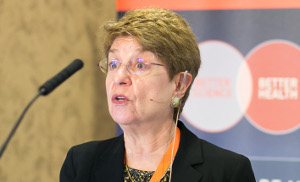 The FDA has made strides in promoting the development of regulatory science since concerns about shortcomings were raised in an independent report published in 2007. Two more recent reports have plotted progress over the intervening eight years.
The FDA has made strides in promoting the development of regulatory science since concerns about shortcomings were raised in an independent report published in 2007. Two more recent reports have plotted progress over the intervening eight years.
“The FDA has responded since 2007, but there are more challenges,” Carol Linden, Director Office of Regulatory Science and Innovation, FDA, said. These center around biomarkers, increasing the efficiency of clinical trials through master protocols and networks, genomics, analytical methods for nanotechnologies and modernizing toxicology.
In addition, regulatory science needs to be seen as a distinct discipline, with its practitioners having professional recognition and a formal career path.
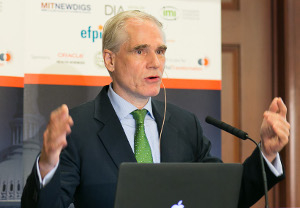 For Hans-Georg Eichler, Senior Medical Officer, EMA, regulatory science needs to fulfil three functions. First, regulators need to be abreast of all new developments in analytical tools, so that EMA assessors understand the how to interpret the data that are generated. It is not appropriate to disagree with a finding because of ignorance about the how the evidence was generated, Eichler said.
For Hans-Georg Eichler, Senior Medical Officer, EMA, regulatory science needs to fulfil three functions. First, regulators need to be abreast of all new developments in analytical tools, so that EMA assessors understand the how to interpret the data that are generated. It is not appropriate to disagree with a finding because of ignorance about the how the evidence was generated, Eichler said.
The second requirement is that regulatory science supports pharmacovigilance, by providing the science and the channels to unpick adverse events – for example, understanding why some children in northern Europe who were vaccinated against swine flu in 2009 developed narcolepsy.
Several possible causes of this have been eliminated, but the exact reason remains unclear. “It’s an unfolding case, but a good example of regulatory science starting from a pharmacovigilance signal,” said Dr Eichler. “We need to use the learnings to avoid it happening again.”
Third, Dr Eichler said regulatory science must define the decision-making rules to facilitate the next generation of targeted products, enabling them to be tested in small subgroups.
Regulatory science also needs to pay attention to manufacturing processes and the oversight of supply chains, believes Sandra Milligan, Senior Vice President and Head of Global Regulatory Affairs and Clinical Safety, Merck.
 The increasing sophistication of products and the globalization of production are making for mounting complexity. One recent analysis showed the distance one drug substance travelled from the manufacturer to the patient was equivalent to going to the moon and back.
The increasing sophistication of products and the globalization of production are making for mounting complexity. One recent analysis showed the distance one drug substance travelled from the manufacturer to the patient was equivalent to going to the moon and back.
In parallel with more complicated products, comes significant innovation and change in manufacturing processes. The pharma industry is for example now moving from batch to continuous processing. As a consequence, “We need more regulatory science in this area,” Dr Milligan said.
A higher level of collaboration is needed to fill the gaps in countries where drug regulation is lagging and regulatory science is not prominent, Dr Milligan believes. “Regulatory science is collaborative science. Don’t forget industry in the discussion; it has a strong part to play,” she said.
While industry may feel its regulatory science expertise is underutilized, patients feel regulatory science takes little account of their needs, and in focussing in on biological science, fails to involve them in decision making processes.
“Patients want to be part of a decision making process that helps [them] understand risks and benefits,” said Alastair Kent, Director, Genetic Alliance UK. “We all know there’s no such thing as a perfect medicine – we have to have a say in what outcomes matter to us.”
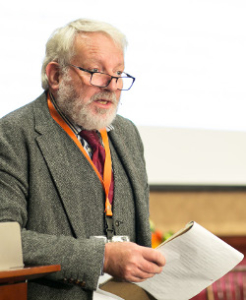 To support this it is necessary to codify what is meant by outcomes, in order to overcome the charge that patient evidence matters less because it is anecdotal and subjective.
To support this it is necessary to codify what is meant by outcomes, in order to overcome the charge that patient evidence matters less because it is anecdotal and subjective.
Regulatory science also needs to underpin new models that will reduce the costs and timelines of drug development. “The traditional route from phase I to phase III won’t work for many products coming through,” Mr Kent said.
As an example, Mr Kent pointed to the EMA’s Advanced Therapies Medicinal Products regulation, governing cell and gene therapies. Since it was introduced in 2007 with the aim of facilitating development, only a handful of products have been approved under the regulation.
“The field is seething with excitement, but products are not coming through. What the framework has done in my view is create perverse incentives for academics to go round the system because it’s complicated,” Mr Kent said.
Mr Kent believes regulatory science should not be given primacy in decisions about drugs, saying this is part of the social contract. “Someone has to say go or no go, but this is a societal decision as much as a scientific one,” he said.
For Gigi Hirsch, Executive Director, MIT Center for Biomedical Innovation; Program Director, MIT NEWDIGS, the crux is not a paucity of innovation in regulatory science, but that there are barriers to taking that innovation and implementing it. “Regulators are often caught between a rock and a hard place in this context; the success of regulators is in the eye of the beholders,” she said.
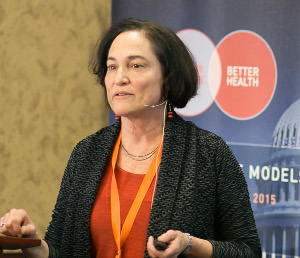 Flexibility in allowing trade-offs between evidence generation and access, is the way to square this circle. The MIT NEWDIGS program aims to support this flexibility by providing a safe haven for global multi-stakeholder collaboration. The confidential environment allows for open discussion in a pre-competitive environment, to reach a view on what decisions need to be taken to move products forward and what evidence is required for everyone to feel comfortable with these decisions.
Flexibility in allowing trade-offs between evidence generation and access, is the way to square this circle. The MIT NEWDIGS program aims to support this flexibility by providing a safe haven for global multi-stakeholder collaboration. The confidential environment allows for open discussion in a pre-competitive environment, to reach a view on what decisions need to be taken to move products forward and what evidence is required for everyone to feel comfortable with these decisions.
“We have to move the needle for the patient, but it has to be acceptable to all the stakeholders,” Dr Hirsch said.
As part of the Janus project, the NEWDIGS model for collaboration has been applied to 13 case studies. From this it has become evident there need to be some quantitative analytics for assessing success and MIT NEWDIGS is now working with its partners to develop these.
In describing what happens in clinical practice and beyond the doctor’s office, real world evidence gets to the core issue of patient-centered development.
As yet however, there is little agreement on what constitutes real world evidence, how and what data should be collected and how it should then be marshalled and analysed in support of personalized medicine and new health models.
In addition to these practical considerations there are other barriers – a lack of consensus, lack of standardization of real world research methodologies, the brick wall of data protection legislation, scepticism about the whole enterprise and cultural hurdles in implementation.
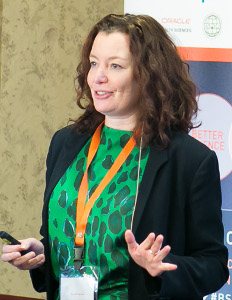 Sarah Garner, Associate Director Science Policy and Research, National Institute for Health and Clinical Excellence (NICE), described a number of projects in which she is involved that are seeking to address some of these issues and lay a foundation for real world evidence to be used in practice, creating a bridge between efficacy in clinical trials and effectiveness in clinical practice.
Sarah Garner, Associate Director Science Policy and Research, National Institute for Health and Clinical Excellence (NICE), described a number of projects in which she is involved that are seeking to address some of these issues and lay a foundation for real world evidence to be used in practice, creating a bridge between efficacy in clinical trials and effectiveness in clinical practice.
Such work, “Puts a regulatory focus on efficacy downstream [of approval], on what happens in patients like me,” Dr Garner told the conference.
So for example, the IMI 2 Adapt Smart project aims to establish a platform for MAPPs to be implemented in Europe. The project, which involves more than 30 participants, is investigating tools and methodologies, engaging all relevant stakeholders to develop concepts that will make MAPPs work in practice.
The research will allow MAPPs-related activities to be coordinated across IMI as a whole.
Meanwhile, another project underpinning MAPPs, GetReal, is looking at how to develop a decision-making framework to assist in designing trials that capture real world evidence during clinical development, providing insights into how effective a drug is likely to be in clinical practice.
For Dr Garner, MAPPs is about taking the existing rigid “fixed price menu” approach to drug development and reconfiguring it to introduce flexibility and increase relevance. Real world evidence sits at the heart of this effort. Amongst the challenges to be faced are cultural change, skills development, confidentiality and defining best practice. “Real world evidence is about managing complexity,” Dr Garner said.
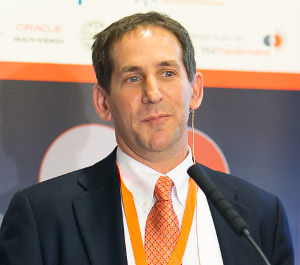 Jeff Brown, Associate Professor, Department of Population Medicine, Harvard Pilgrim Health Care Institute and Harvard Medical School, described how the FDA’s Sentinel system is overcoming the fragmentation of the US healthcare system to use real world data for evidence generation.
Jeff Brown, Associate Professor, Department of Population Medicine, Harvard Pilgrim Health Care Institute and Harvard Medical School, described how the FDA’s Sentinel system is overcoming the fragmentation of the US healthcare system to use real world data for evidence generation.
“The data is there and we have a requirement to use it – we must figure out how to use it,” Dr Brown said. He told delegates to, “fight the idea that because the data is not perfect and the methods are not perfect, you can’t do anything with it.”
From its inception in 2008, the Sentinel system has grown to include data on 180 million people and is being actively used for monitoring the safety of approved medicinal products. One example of how the information has been used in practice concerns the new-generation oral anticoagulant dabigatran, which was expected to reduce incidences of bleeding compared to standard of care treatment with warfarin.
However, following its approval by the FDA in 2010 adverse event reports seemed to imply dabigatran-treated patients were more likely to suffer bleeding episodes than patients treated with warfarin.
As Dr Brown noted, bleeds are such a common side effect of warfarin the likelihood is they are rarely reported. “The FDA came to us and said what do you see? We saw no evidence that dabigatran presented a higher risk of bleeds. We could do that quickly, before a longer-term epidemiology study, we got an instant answer.”
Although to date the Sentinel database has solely been used for safety queries, Dr Brown said it could be applied to answer questions about effectiveness.
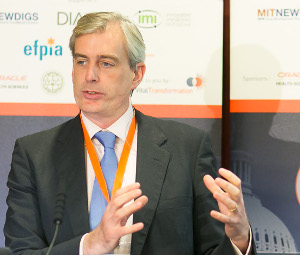 The pharma industry is making forays into the application of real world data and Adam Heathfield, Senior Director Global Health and Value Innovation Center, Pfizer, said the company is now routinely using a database of claims data to inform decisions from phase I development to market.
The pharma industry is making forays into the application of real world data and Adam Heathfield, Senior Director Global Health and Value Innovation Center, Pfizer, said the company is now routinely using a database of claims data to inform decisions from phase I development to market.
Pfizer has added a layer of functionality to the database, making it possible to carry out specific queries. “There have been dramatic reductions in cycle time as a result,” Dr Heathfield said.
Typical queries might involve identifying non-responders or tracking when patients experience a disease flare. “We are not necessarily dealing with big questions, but looking to see Who’s ill? Where are they? How are people cycling through healthcare systems?
Claims data is not being substituted for RCT data. “It is the right type of data for these kinds of questions,” Dr Heathfield said. The reduced time to get answers provides a competitive advantage, for examples in decisions about licensing. It is also important in planning and resourcing clinical trials.
Pfizer’s experience also illustrates that applying real world data in a meaningful way does not require a single, harmonized database.
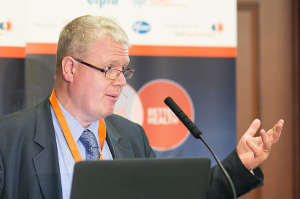 As Mark Pearson, Deputy Director, Directorate of Employment, Labour and Social Affairs, OECD, noted, pharmaceuticals pricing is an increasingly hot political issue. The way to defuse and deal with this is to apply real world data to inform pricing and reimbursement.
As Mark Pearson, Deputy Director, Directorate of Employment, Labour and Social Affairs, OECD, noted, pharmaceuticals pricing is an increasingly hot political issue. The way to defuse and deal with this is to apply real world data to inform pricing and reimbursement.
However, the feedback from OECD member countries is that doing this is both cumbersome and requires payers to have expertise that is lacking currently. “If it is to become routine we need to use routine data, not require special data collection,” Mr Pearson said.
A survey of the OECD’s 34 member countries showed 13 are using real world data in reimbursement decisions, with some providing coverage with evidence development and other adopting a more ambitious outcomes-based approach, where the price paid reflects the performance of a drug in real life.
Along with helping to speed up access, use of real world data is supporting value-based pricing, and differential pricing for the same drug in different indications. However, as yet payers have neither the time, expertise or political capital, to apply real world data at scale, and as a result it is used only in special cases.
In addition, agreements on outcomes-based pricing currently rely on special data collection, creating yet more information silos.
Johnathan Sheldon, Global Vice President Healthcare, Oracle Health Science, said that in the past two years real world evidence has made the transition from research to clinical care. At the same time pharma has embraced it, with Roche, for example, having accompanying biomarkers for half of its products in development.
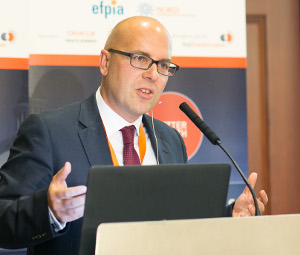 Personalized medicine has reached the public consciousness through President Obama’s Precision Medicines Initiative, announced in this year’s State of Union address.
Personalized medicine has reached the public consciousness through President Obama’s Precision Medicines Initiative, announced in this year’s State of Union address.
Obstacles remain however. The mechanics of bringing together RCT data, real world data, patient reported outcomes and other data sources, require some level of consistency – even if this is only at the level of a unique patient identifier.
There is a need for action on data privacy, with current rules constraining collaborative research.
And despite long-running efforts to tackle it, interoperability remains a roadblock to progress. “The Precision Medicines Initiative is an opportunity to reboot the system: to use it as a focus to fix interoperability in healthcare,” Dr Sheldon said.
The traditional hierarchical model of drug development, in which patients at the end of the line take what they are given, is not appropriate for the coming era of personalized medicine.
In its place there should be a framework where patients are confident and enthusiastic about participation. If this is built correctly, research cycles will be faster, there will be higher levels of enrolment, better retention and the results will be more likely to be translated into practice.
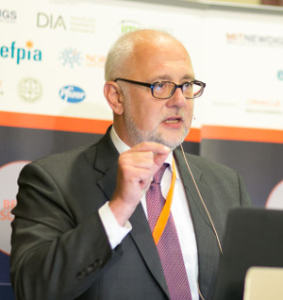 One route to improving participation is to improve access to information through trusted channels, suggested Dainius Pavalkis, Professor, Lithuanian University of Health Sciences. Keying “patient recruitment” into Medline throws up 8,000 responses; searching the same term on Google gives millions of hits. “The data is not coming from scientifically approved sources, but from Google,” Professor Pavalkis said.
One route to improving participation is to improve access to information through trusted channels, suggested Dainius Pavalkis, Professor, Lithuanian University of Health Sciences. Keying “patient recruitment” into Medline throws up 8,000 responses; searching the same term on Google gives millions of hits. “The data is not coming from scientifically approved sources, but from Google,” Professor Pavalkis said.
The way to truly engage patients is through shared decision-making, whereby healthcare professionals explain options, enabling patients to choose treatments that suit their needs and reflect what is important to them.
As Professor Pavalkis noted, there is little of this type of interaction currently. “We need education and doctor engagement. All stakeholders need to be engaged in the process,” he said.
For Vicki Seyfert-Margolis, CEO, My Own Med Inc., increasing patient engagement should start with changing the language – to talk not about subjects but individuals; not patients but health consumers.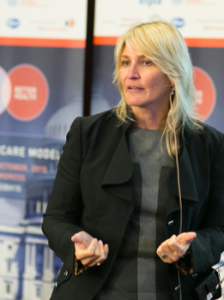
Such a change in the use of language would reflect the fact that most things determining outcomes happen not in the clinic but in real life. Acknowledging this raises the question of how patients are empowered “to take control of their health destiny,” Dr Seyfert-Margolis said.
My Own Med has developed a digital platform that captures data on a person’s health in between interactions with formal healthcare providers. Such data prompts providers to focus on user experience, whilst at the same time supporting users and caregivers, and providing the transparency on which to build more trusting relationships.
For pharma companies, the data provides insights into what is happening to their products. “It’s a way to get a handle on what is going on in the real world, and how it influences effectiveness,” said Dr Seyfert-Margolis.
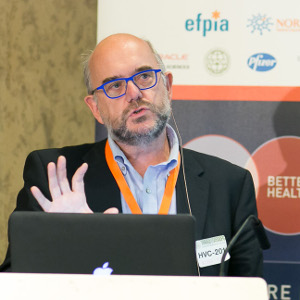 It is now clear that healthcare systems can learn faster by involving patients, and the pharma industry is also waking up to this fact, said Bart Vannieuwenhuyse, Senior Director Health Information Sciences, Janssen Pharmaceuticals. “We are starting the journey to learn about patient involvement [moving from] a product-centric approach to where the patient/individual is at the center of an integrated universe,” he said.
It is now clear that healthcare systems can learn faster by involving patients, and the pharma industry is also waking up to this fact, said Bart Vannieuwenhuyse, Senior Director Health Information Sciences, Janssen Pharmaceuticals. “We are starting the journey to learn about patient involvement [moving from] a product-centric approach to where the patient/individual is at the center of an integrated universe,” he said.
A number of tools, from analyses of social media streams to formal market research, are being deployed to get greater insights into patients’ views. Some of the results challenge preconceptions and illustrate the necessity of such investigations.
A case in point is the analysis of 150,000 conversations amongst diabetics that were harvested from the Web. This revealed the main preoccupations are feeling tired and a desire not being confronted with the condition every day. “I thought they would talk about hyper- and hypoglycaemia,” said Mr Vannieuwenhuyse. “Personally, I had not expected [this] and in R&D it is not reflected in clinical outcomes.”
The example demonstrates how analyses of social media streams can be used to gain insights that can then be applied to inform traditional ways of working.
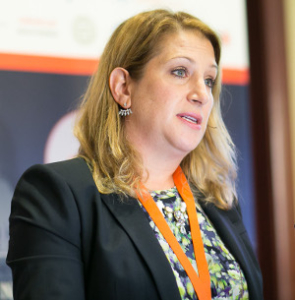 Jocelyn Ulrich, Director Scientific and Regulatory Affairs, PhRMA, told the meeting it is critical shareholders work out how to engage patients. As things stand there is a problem with recruitment, with the disincentives to participation meaning those who do take part are not representative of the population as a whole.
Jocelyn Ulrich, Director Scientific and Regulatory Affairs, PhRMA, told the meeting it is critical shareholders work out how to engage patients. As things stand there is a problem with recruitment, with the disincentives to participation meaning those who do take part are not representative of the population as a whole.
“The best outcomes are when you get a diverse population in trials, but we are not achieving that, with low participation by Hispanics, African Americans and Asian Americans,” Ms Ulrich said.
The problem is multi-faceted, with practical obstacles such as a lack of transport or the need to take time off work, featuring in the mix. However, by far the biggest factor is a lack of awareness of clinical trials.
PhRMA is mounting a national education campaign and has set up a dedicated website to try and break through this barrier. “It’s a matter of public health equity and priority that everyone is aware of trials,” Ms Ulrich said.
Whilst it is necessary to increase participation in traditional trials, this is not sufficient to address the current shortcomings. Clinical trials need to be globalized and the FDA has to accept innovative approaches such as adaptive design. Individual patient perspectives should be factored into trial protocols.
New technology should be leveraged to improve the clinical research infrastructure, for example using mobile communications to bring the trial to the patient, Ms Ulrich suggested.
Watch the full video of this session.
Capture the intangibles
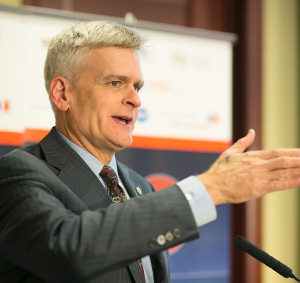 As healthcare moves to adopt personalized medicine it will be even more important to go beyond metrics such as BMI, height, weight, sodium, potassium or creatinine levels to capture the more intangible, observational information, said Bill Cassidy, United States Senator for Louisiana, MD.
As healthcare moves to adopt personalized medicine it will be even more important to go beyond metrics such as BMI, height, weight, sodium, potassium or creatinine levels to capture the more intangible, observational information, said Bill Cassidy, United States Senator for Louisiana, MD.
Trained physicians can look at someone and see they are not quite right, but it is not possible to capture this in electronic records, Senator Cassidy said. Physicians are not resistant to EHR because they are Luddites, but because it leaves gaps in the record. “They feel EHR is the way to go, but they are not satisfied with it. “You can’t see interval changes, you need notes to make you more aware,” the Senator said.
In addition, there is a problem with interoperability and workflow. “It’s not just a case of [physicians] reading one another’s notes – they should all flow together, regardless of where they came from”, said Senator Cassidy, telling delegates the issue of EHR will be one of his priorities on the health committee over the next 12 months.
Download the full event report

